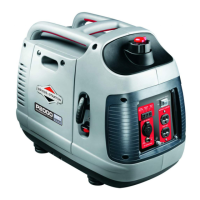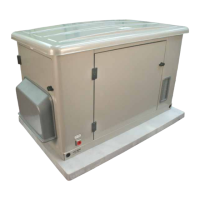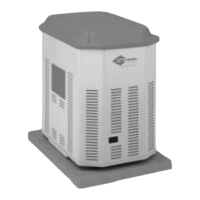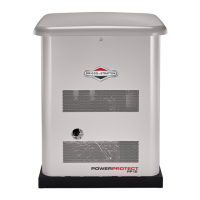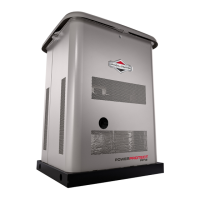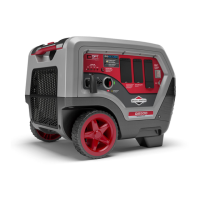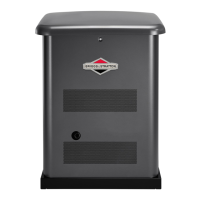7
WARNING! Generator voltage could cause
electrical shock or burn resulting in death or
serious injury.
• Use a residual-current device (RCD) in any damp or highly
conductive area, such as metal decking or steel work.
• Do not touch bare wires or receptacles.
• Do not use generator with electrical cords which are
worn, frayed, bare or otherwise damaged.
• Do not operate generator in the rain or wet weather.
• Do not handle generator or electrical cords while standing
in water, while barefoot, or while hands or feet are wet.
• Do not allow unqualified persons or children to operate or
service generator.
• Keep children a safe distance from generator.
The USB port allows you to recharge any USB powered
device with a USB charging cable (not included).
NOTICE For charging ITE (Information Technology
Equipment) only.
This receptacle allows you to recharge a 12 Volt
automotive or utility style storage battery with the battery
charge cable provided.
A DC circuit breaker (F) protects this receptacle from
overloads. If circuit breaker trips, wait a few minutes and
push button in to reset.
Protection of electrical components depends on circuit
breakers specifically matched to the generator. Replace
circuit breaker with identical rating and performance
characteristics.
NOTICE When using battery charge circuit and USB
port, turn QPT switch to OFF (0) position.
Two Briggs & Stratton P3000 inverter generators can be
run in parallel with a Briggs & Stratton parallel operation
kit (optional equipment) for a total output of power of up
to 4,800 watts (4.8 kW).
NOTICE Total electrical load connected to the parallel
kit must not exceed 4,800 watts (4.8 kW).
See the parallel operation kits instruction sheet for
detailed instructions on installation and operation of the
connected generators.
1. Turn off and unplug all electrical loads from generator
panel receptacles. Never stop engine with electrical
devices plugged in and turned on.
2. Let engine run at no-load for one minute to stabilize
internal temperatures of engine and generator.
3. Push engine switch to OFF (0) position.
7
The control panel has a built in LCD display (A) to
monitor the following features:
• Load Monitor (Total Generator Load)
• Hour Meter (Total Generator Hours)
• Maintenance Reminder (Engine Maintenance)
The load monitor measures the output wattage
(generator load) of all receptacles and displays the
percentage of total generator load.
The LCD displays and records how many hours your
generator has run (up to 999.9).
The LCD also has a maintenance reminder to alert you to
change air filter, change oil, and change spark plug. The
LCD display will flash both the load percentage and the
hour display every 50 hours for the different maintenance
intervals. See Maintenance Schedule for different
maintenance intervals.
Pressing the “View” button (B) will toggle between the
flashing load percentage and the flashing hour display.
Once maintenance has been performed, push and hold
the “View” button for a minimum of 3 seconds to stop the
display from flashing and return to normal operation.
The green LED output indicator light (C) comes on when
the generator is operating normally. It indicates that the
generator is producing power at the receptacles.
Overload Alarm
The red LED overload alarm light (D) comes on and cuts
power to the receptacles if you overload the generator.
The green output indicator light will also go off. You must
turn off and unplug all electrical loads, press the “Reset”
button (E) and then plug in electrical loads one at a time
to continue in normal operating mode.
The low oil indicator system is designed to prevent
engine damage caused by low engine oil. If the engine
oil level drops below a preset level, the yellow LED low
oil indicator light (F) comes on and an oil level switch will
stop the engine. If the engine stops or the yellow LED
low oil indicator light comes on when you pull the recoil
handle, check the engine oil level.

